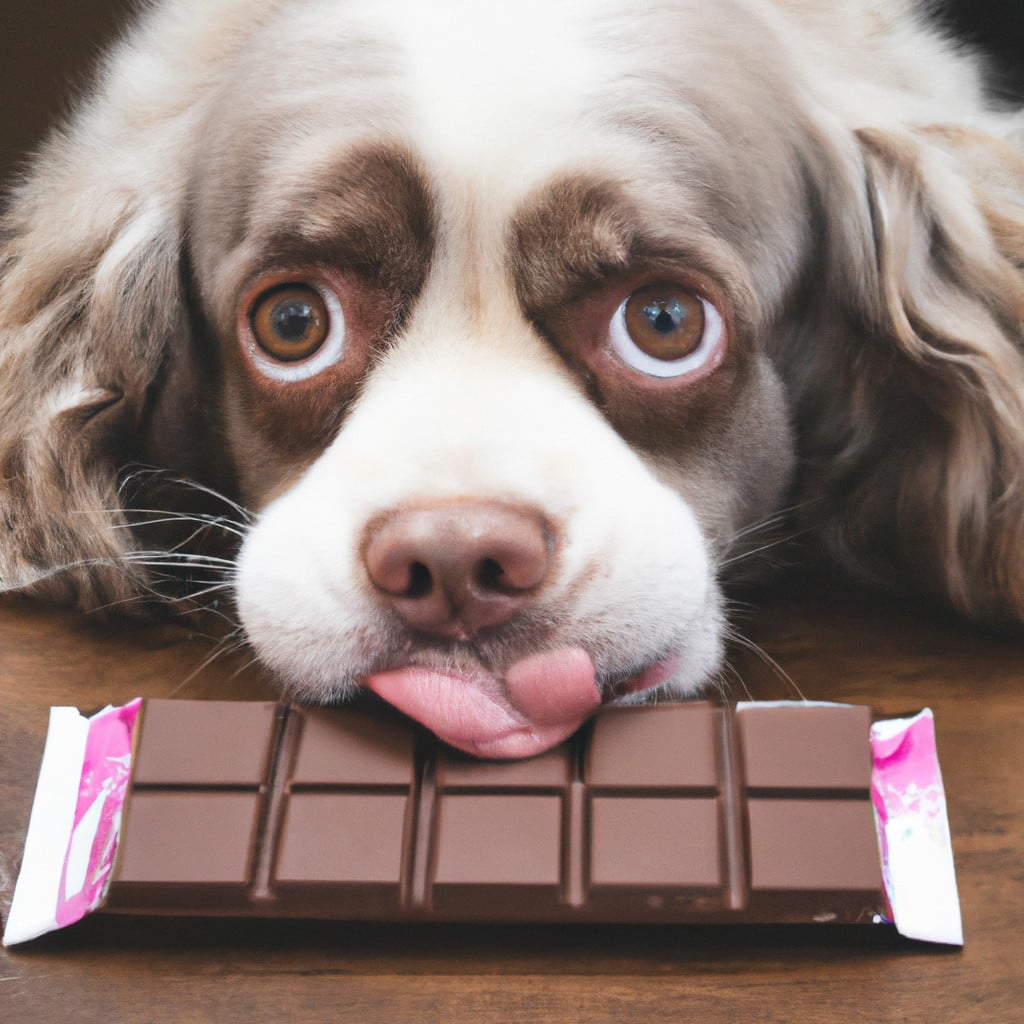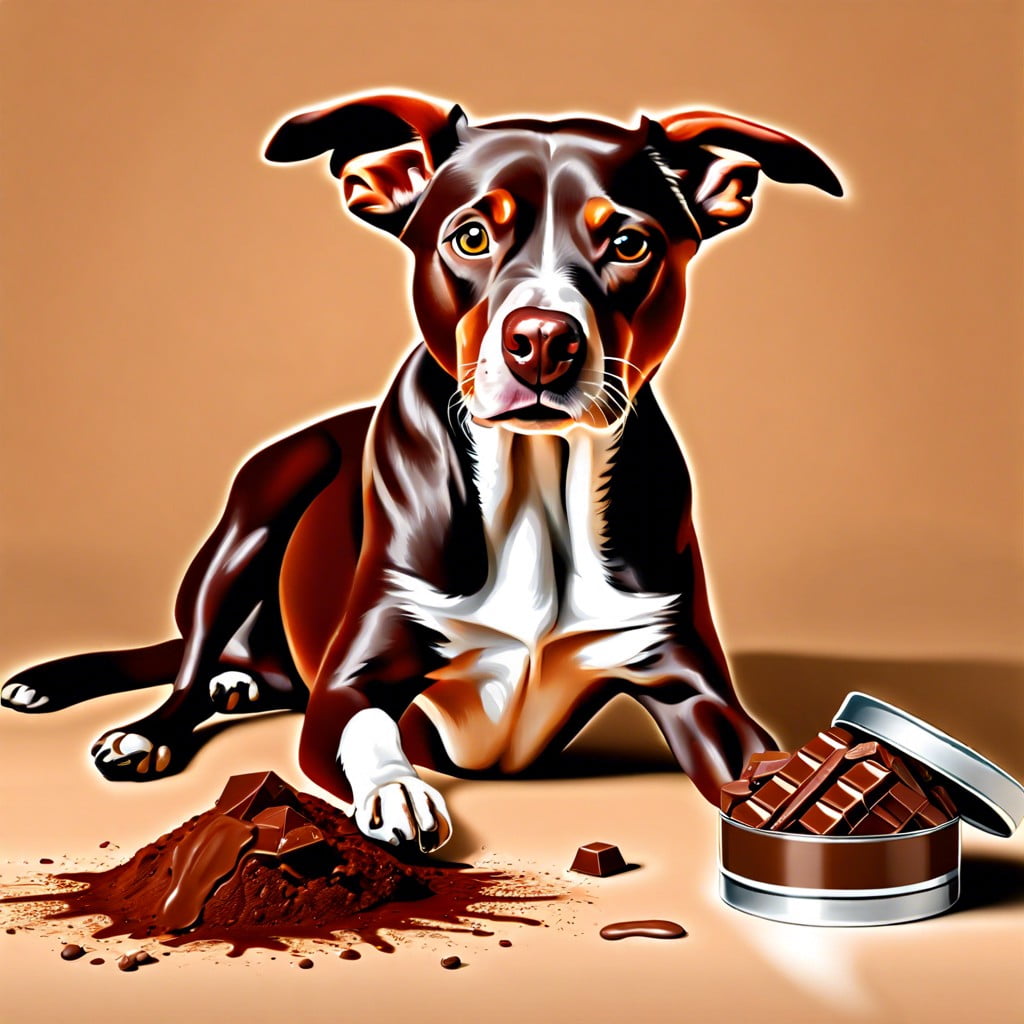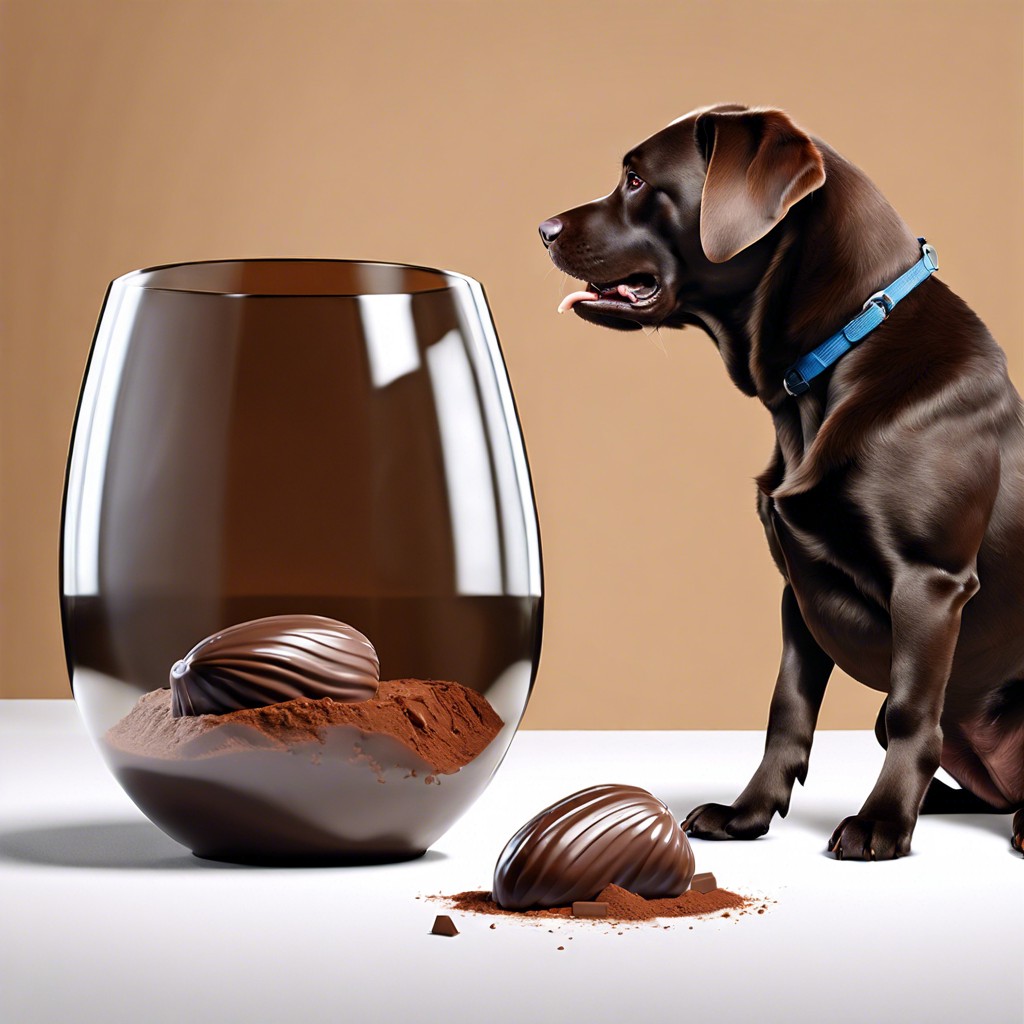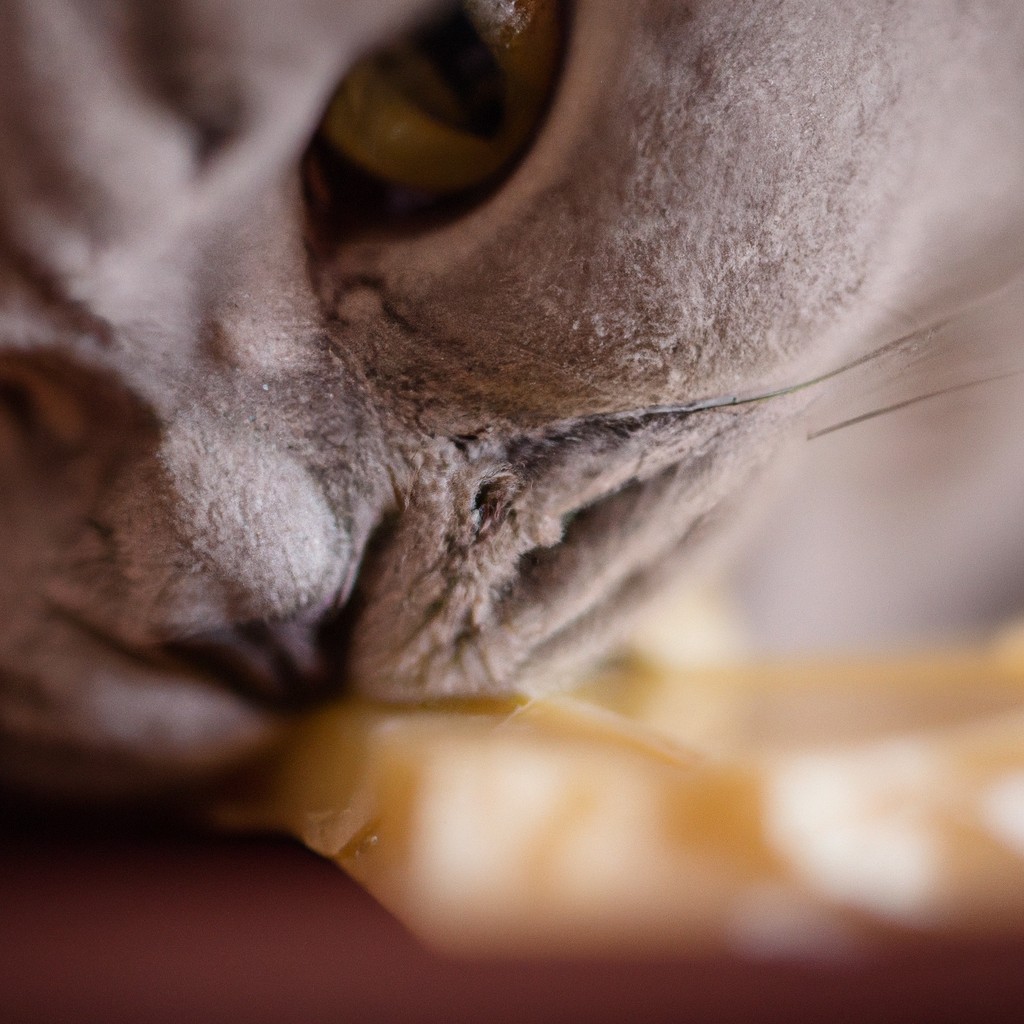This article provides essential information on what happens when a dog eats chocolate, and the immediate steps to take in response.
Key takeaways:
- Chocolate is toxic to dogs due to theobromine and caffeine.
- Symptoms of chocolate poisoning include vomiting, restlessness, and seizures.
- Remove chocolate, contact a vet, and stay calm.
- Prevent chocolate ingestion by storing it out of reach and educating household members.
- Seek immediate veterinary help if your dog shows symptoms or ingests a significant amount of chocolate.
Inside
Why Chocolate Is Toxic to Dogs

Chocolate contains theobromine and caffeine, both of which are stimulants that dogs cannot metabolize efficiently.
Theobromine is especially harmful because dogs process it much more slowly than humans do, leading to toxic accumulation in their system.
The severity of the toxicity depends on the type and amount of chocolate consumed and the size of the dog.
Dark chocolate and unsweetened baking chocolate, which contain higher levels of theobromine, are more dangerous than milk chocolate.
White chocolate has negligible amounts of theobromine but is still unhealthy for dogs.
Small quantities may lead to mild gastrointestinal upset, whereas significant amounts can cause seizures, heart problems, and potentially be fatal.
What Are the Signs of Chocolate Poisoning?
Recognizing the symptoms of chocolate poisoning in dogs is crucial for timely intervention. The severity and type of symptoms can vary depending on the amount and type of chocolate consumed. Initial signs may manifest within hours and include:
- 1. Vomiting and diarrhea: These are often the first indicators of toxicity.
- 2. Increased thirst: Dogs may start to drink more water due to chocolate’s diuretic effects.
- 3. Restlessness: Dogs may appear agitated or hyperactive as the caffeine in chocolate stimulates the nervous system.
- 4. Elevated heart rate: The theobromine in chocolate can cause an increased heart rate, which can lead to more severe complications.
- 5. Muscle tremors or seizures: In severe cases, high doses of theobromine can induce muscle spasms or seizures.
- 6. Weakness or collapse: If a large amount is ingested, it can lead to more dire consequences, like cardiac failure.
It’s important to note that darker chocolates contain more theobromine and are therefore more dangerous to dogs. Always monitor for any abnormal behaviors after suspected chocolate ingestion and act promptly.
What to Do If Your Dog Eats Chocolate
Assess the situation quickly by determining the type and amount of chocolate ingested and your dog’s size and weight. Smaller dogs and certain types of chocolate, like dark chocolate, pose greater risks.
Remove any remaining chocolate from your dog’s reach to prevent further ingestion.
Do not induce vomiting unless instructed by a veterinarian. Home remedies can be harmful.
Contact your vet immediately, providing details of your dog’s weight, the type of chocolate ingested, and the approximate amount. If it’s after hours, seek out an emergency vet clinic.
Keep a sample of the chocolate wrapper to help the veterinarian assess the situation.
Stay calm to keep your dog calm; stress can exacerbate symptoms.
Follow veterinary advice, which may include bringing your dog in for treatment or monitoring at home if the amount ingested is minimal.
Keep a record of your dog’s behavior and any symptoms that develop to inform the vet.
Prepare to provide relevant medical history, including any pre-existing conditions that could affect treatment.
How to Prevent Your Dog From Eating Chocolate
Store chocolate out of reach, ideally in high cabinets or securely closed drawers that cannot be nudged open by a curious snout. Consider using child-proof locks for added security.
Educate all members of the household, including children, about the dangers of chocolate to dogs and the importance of keeping it inaccessible.
Be mindful during holidays and celebrations when chocolate is more prevalent. Ensure that chocolate treats are kept in a safe place during these times and clean up promptly after gatherings.
When baking or cooking with chocolate, keep your dog out of the kitchen to prevent accidental ingestion of chocolate spills or scraps.
Never offer chocolate to your dog as a treat, and be cautious with foods that may contain chocolate as an ingredient.
Use deterrents if necessary. If your dog has a habit of scavenging, consider using trash cans with a secure lid or storing them inside a latched cabinet.
Practice obedience training. Teaching your dog commands such as “leave it” can be lifesaving in case they encounter chocolate or other harmful substances.
When to Get Help
It’s crucial to seek veterinary attention immediately if your dog shows symptoms of chocolate poisoning, such as vomiting, diarrhea, rapid breathing, increased heart rate, or seizures. Even if symptoms are not yet present but you suspect your dog has ingested a large quantity of chocolate, particularly dark or baking chocolate, don’t wait for signs to appear. Timeliness can be pivotal in treatment success.
Keep in mind that the severity of the situation may depend on the dog’s size, the type of chocolate consumed, and the amount. For instance, a small piece of milk chocolate may not be as concerning for a large breed as it would be for a small dog. Still, calculating the risk isn’t straightforward, and any chocolate ingestion in dogs warrants a call to the veterinarian.
Always have your vet’s phone number, as well as that of an emergency veterinary clinic and the Animal Poison Control Center, easily accessible. Providing specific information, such as the type and amount of chocolate, your dog’s weight, and any symptoms, can assist the vet in giving precise advice or preparing for your dog’s treatment upon arrival.




